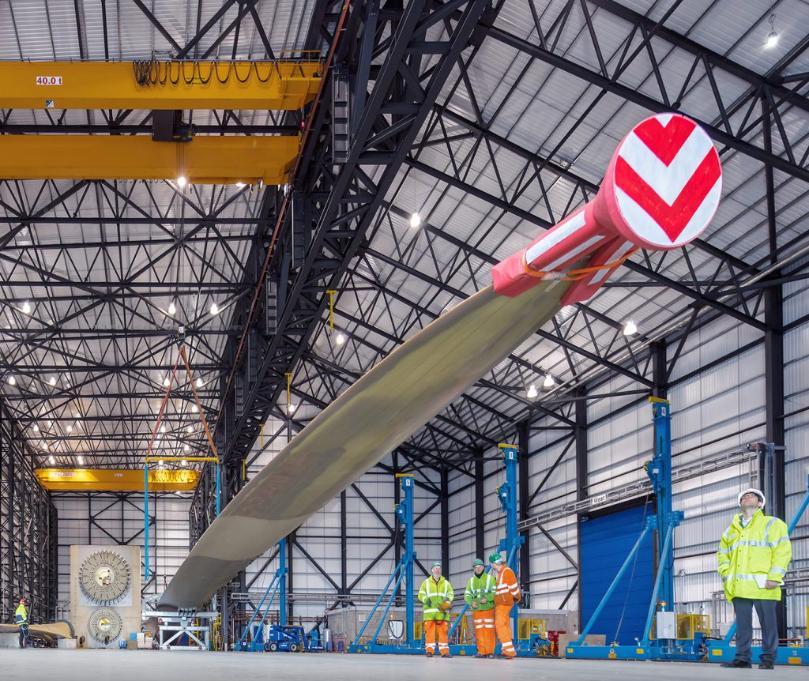Innovative turbine testing cements UK as global leader in Offshore Wind
An innovative dual-axis turbine test developed at Durham University is supporting the UK Offshore Wind sector to grow and introduce larger turbine blades. Assuring the mechanical integrity of the turbine blade type is a vital step in deploying turbines offshore, increasing confidence in the product and supports the growth of the wind energy sector.
The new testing method for wind turbine blades was developed in PhD research undertaken by Peter Greaves in partnership with the Offshore Renewable Energy (ORE) Catapult and LM Wind Power. The ‘dual-axis’ testing has since been adopted by the offshore wind industry.
The Challenge
During its service life a wind turbine blade is subjected to loading in two main directions - ‘flapwise’ and ‘edgewise’. Despite these two predominant loads occurring at the same time in the field, the flapwise and edgewise fatigue tests which are performed as part of the certification process for wind turbine blades are usually done separately.
Recognising this as a shortcoming of current test practices the OREC testing centre funded a PhD to investigate bi-axial fatigue testing at Durham University.
The research developed a novel method of mechanically testing large blades for wind turbines combining both types of load. This approach is shown to be more representative of the loading and stress blades experience in service.
Applying the new fatigue test
The new test has been shown to contribute to a potential reduction in the weight of wind turbine blades and the duration of fatigue tests leading to reduced cost.
This more accurate and quicker method for testing leads to greater confidence in the design life of the tested blade and is more effective for the larger wind turbine blades coming onto the market.
The new method has now been used to test the largest wind turbine blade in the world at OREC’s testing facilities in Blyth, Northumberland. This represented a major milestone for the entire wind industry. Enabling the testing of these world-leading technologies here in the UK cements our position as a global leader in offshore wind and presents unparalleled opportunities for the UK supply chain.
Following on from the PhD study Peter Greaves undertook a two-year collaborative Knowledge Transfer Partnership project between ORE Catapult and Durham University, partly funded by Innovate UK, to commercialise the research and implement the testing.
He is now a senior research engineer at OREC and the innovative testing method is being used to support the growing offshore wind sector in the UK.
Find out more about Durham University’s wind energy research and leadership in wind energy innovations.
Related publication:
Greaves PR, Dominy RG, Ingram GL, Long H, Court R. Evaluation of dual-axis fatigue testing of large wind turbine blades. Proceedings of the Institution of Mechanical Engineers, Part C: Journal of Mechanical Engineering Science. 2012;226(7):1693-1704. doi:10.1177/0954406211428013


/prod01/prodbucket01/media/durham-university/research-/research-institutes/durham-energy-institute/landscapes-cityscapes-montages-etc/Walney-sunset-2000X800.jpg)
